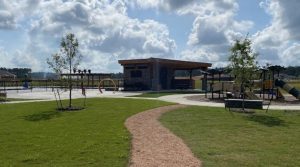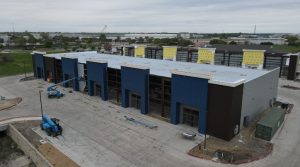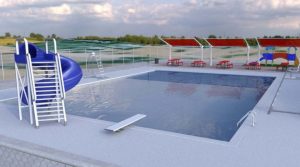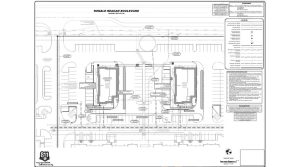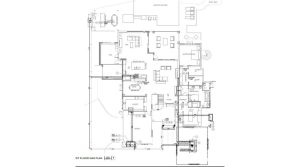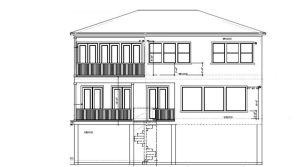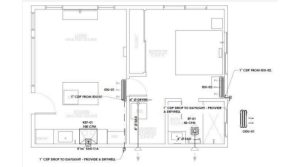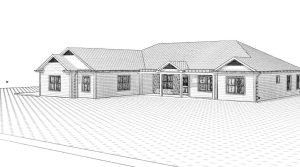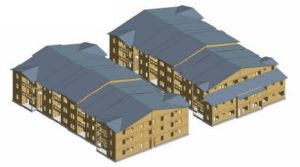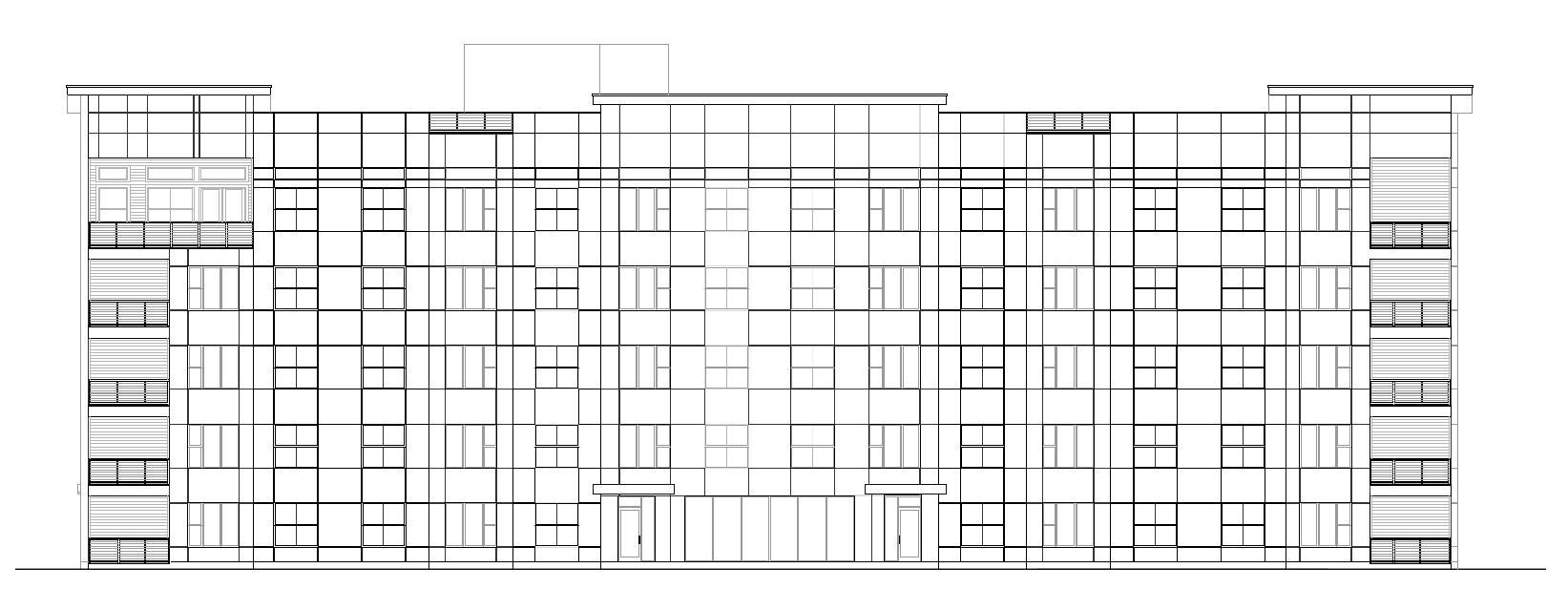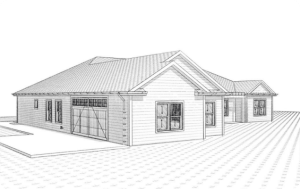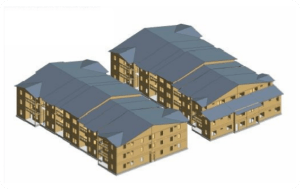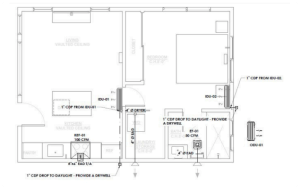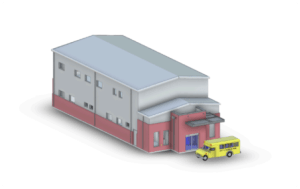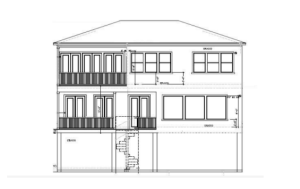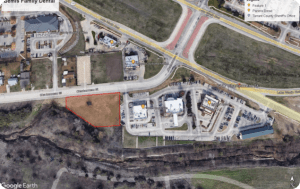Designing for a Sustainable Future: Integrating Renewable Energy Systems into Architectural Designs
As the world becomes more aware of the dangers of climate change and the importance of sustainability, the architectural industry has started to take a step in the right direction. Designing for a sustainable future is not only about creating aesthetically pleasing buildings but also about ensuring that they are energy-efficient and environmentally friendly. One of the ways architects can achieve this is by integrating renewable energy systems into their designs. Renewable energy systems like solar and wind power can reduce a building’s carbon footprint and energy costs while increasing its value and appeal. In this blog post, we will explore how renewable energy systems can be incorporated into architectural designs, the benefits of doing so, and some of the most innovative examples around the world.
1. The importance of integrating renewable energy systems into architectural designs
As the world becomes increasingly aware of the pressing need to address climate change and reduce our dependence on fossil fuels, the integration of renewable energy systems into architectural designs has gained immense importance. This innovative approach not only helps mitigate the environmental impact of buildings but also has numerous benefits for both the occupants and the community at large.
One of the primary reasons for integrating renewable energy systems into architectural designs is the reduction of greenhouse gas emissions. Buildings are responsible for a significant portion of global carbon dioxide emissions, mainly due to their reliance on non-renewable energy sources such as coal and natural gas. By incorporating renewable energy systems like solar panels, wind turbines, or geothermal heating and cooling systems, architects and designers can effectively reduce the carbon footprint of buildings, contributing to a more sustainable future.
Furthermore, integrating renewable energy systems into architectural designs can lead to substantial energy savings. By harnessing the power of the sun, wind, or earth, buildings can generate their own electricity or heat, thereby reducing reliance on the grid. This not only helps lower energy costs for building owners and occupants but also promotes energy independence and resilience in the face of power outages or disruptions.
In addition to environmental and economic benefits, integrating renewable energy systems into architectural designs also enhances the overall quality of the built environment. These systems can be seamlessly incorporated into the design, adding aesthetic appeal and architectural innovation. Solar panels, for instance, can be integrated into building facades or rooftops, blending functionality with form. This integration not only showcases a commitment to sustainability but also serves as a powerful symbol, inspiring others to embrace renewable energy solutions.
Moreover, the integration of renewable energy systems into architectural designs can contribute to the overall well-being and comfort of building occupants. By incorporating passive design strategies such as natural daylighting, natural ventilation, and thermal insulation, architects can create healthier and more comfortable indoor environments. This focus on occupant well-being aligns with the principles of biophilic design and promotes a connection between people and nature within the built environment.
In conclusion, the integration of renewable energy systems into architectural designs is of paramount importance in our collective efforts to create a sustainable future. By reducing greenhouse gas emissions, promoting energy efficiency, enhancing the aesthetic appeal, and improving occupant well-being, architects and designers have the opportunity to shape a built environment that aligns with the principles of environmental stewardship and resilience. Through innovative design solutions and a commitment to sustainability, we can pave the way towards a greener and more sustainable future for generations to come.
2. Benefits of incorporating renewable energy systems in buildings
Incorporating renewable energy systems into architectural designs offers numerous benefits for both the environment and the building owners. By harnessing natural resources to generate power, buildings can significantly reduce their carbon footprint and contribute to a more sustainable future. Here are some key benefits of integrating renewable energy systems:
1. Environmental Impact: Renewable energy sources such as solar, wind, and geothermal power produce clean energy without emitting harmful greenhouse gases. By utilizing these sources, buildings can significantly reduce their reliance on fossil fuels, leading to a substantial decrease in carbon emissions and air pollution.
2. Energy Cost Savings: One of the most significant advantages of renewable energy systems is their potential for long-term cost savings. While the initial investment in installing these systems may be higher, the operational costs are typically lower as renewable energy sources are abundant and free. Building owners can save on electricity bills and even generate revenue by selling excess energy back to the grid.
3. Energy Independence and Resilience: Incorporating renewable energy systems into buildings promotes energy independence. Instead of relying solely on the power grid, buildings can generate their own electricity, reducing vulnerability to power outages and fluctuations in energy prices. This enhances the resilience of the building and ensures continuous energy supply.
4. Improved Building Performance: Renewable energy systems can also enhance the overall performance of a building. For instance, solar panels can provide shade, reducing the need for excessive air conditioning and lowering energy consumption. Additionally, incorporating energy-efficient design elements, such as natural daylighting and passive heating and cooling techniques, along with renewable energy systems, can further optimize the building’s energy efficiency.
5. Positive Brand Image: Designing buildings with renewable energy systems demonstrates a commitment to sustainability and environmental stewardship. Such buildings often garner positive attention and recognition, attracting environmentally conscious tenants, clients, and investors. This can enhance the brand image of the building owner or developer, aligning with the growing global focus on sustainability.
In summary, integrating renewable energy systems into architectural designs not only benefits the environment but also provides numerous advantages for building owners. From reducing carbon emissions and energy costs to enhancing building performance and brand image, the incorporation of renewable energy systems is a crucial step towards creating a more sustainable future.
3. Understanding the different types of renewable energy systems
When it comes to designing for a sustainable future, integrating renewable energy systems into architectural designs is crucial. But before diving into the design process, it is essential to understand the different types of renewable energy systems available.
1. Solar Energy: One of the most popular and widely used renewable energy sources is solar energy. Solar panels, also known as photovoltaic (PV) panels, convert sunlight into electricity. These panels can be installed on rooftops or integrated into the building’s facade, harnessing the power of the sun to generate clean and sustainable energy.
2. Wind Energy: Harnessing the power of wind can also be a viable option for generating renewable energy. Wind turbines, either onshore or offshore, convert the kinetic energy of the wind into electricity. The design and placement of these turbines need to be carefully considered to optimize their efficiency and minimize any potential visual or noise impacts.
3. Geothermal Energy: Geothermal energy utilizes the heat stored within the Earth’s crust to generate electricity or provide heating and cooling. This renewable energy source relies on tapping into geothermal reservoirs through wells and using the natural heat transfer properties of the Earth. Integrating geothermal systems into architectural designs can provide a sustainable and efficient way to regulate indoor temperatures.
4. Biomass Energy: Biomass energy involves using organic materials, such as wood pellets, agricultural residues, or even dedicated energy crops, to generate heat or electricity. Biomass boilers or stoves can be incorporated into architectural designs, utilizing these renewable resources to provide heating solutions while reducing carbon emissions.
5. Hydropower: Hydropower utilizes the energy of flowing or falling water to generate electricity. While large-scale hydropower plants may not be feasible in architectural designs, micro-hydropower systems can be integrated into buildings located near water sources, such as rivers or streams, to generate renewable energy.
Understanding the different types of renewable energy systems allows architects and designers to make informed decisions during the design process. By carefully considering the specific requirements and characteristics of each system, they can create sustainable buildings that not only meet the energy needs but also contribute to a cleaner and greener future.
4. Factors to consider when integrating renewable energy systems into architectural designs
When it comes to integrating renewable energy systems into architectural designs, there are several important factors to consider. These factors not only ensure the successful incorporation of sustainable energy sources but also contribute to the overall functionality and aesthetic appeal of the building.
1. Site Analysis: Conduct a thorough analysis of the site to determine its renewable energy potential. Factors such as solar exposure, wind patterns, and water availability should be assessed to determine the most suitable renewable energy systems to integrate.
2. Energy Needs and Consumption: Understand the energy needs and consumption patterns of the building. This involves analyzing the expected energy demand, peak load requirements, and energy usage patterns to determine the appropriate renewable energy systems to implement.
3. System Scalability: Consider the scalability of the renewable energy systems. It is crucial to design systems that can be easily expanded or upgraded in the future to accommodate changing energy demands or technological advancements.
4. Building Orientation and Design: Optimize the building’s orientation and design to maximize the utilization of renewable energy sources. This includes aligning the building’s orientation to maximize solar exposure, incorporating passive solar design strategies, and designing proper ventilation systems to facilitate natural cooling.
5. Integration with Architectural Elements: Integrate renewable energy systems seamlessly into the architectural design. This involves considering the aesthetics and visual impact of the systems, ensuring they blend harmoniously with the overall design concept.
6. Cost-Benefit Analysis: Evaluate the cost-effectiveness of integrating renewable energy systems. Consider the initial investment, operational costs, maintenance requirements, and potential long-term savings to determine the financial viability of these systems.
7. Regulatory and Environmental Considerations: Familiarize yourself with local regulations and building codes related to renewable energy integration. Ensure compliance with environmental standards and assess any potential environmental impacts associated with the chosen renewable energy systems.
By carefully considering these factors, architects and designers can successfully integrate renewable energy systems into their architectural designs, creating sustainable buildings that not only reduce environmental impact but also provide a comfortable and energy-efficient space for occupants.
5. Case studies of successful integration of renewable energy systems in architectural designs
Case studies of successful integration of renewable energy systems in architectural designs serve as inspiring examples of how sustainable practices can be seamlessly incorporated into the built environment. These real-life examples not only demonstrate the feasibility and effectiveness of renewable energy systems but also showcase the potential for creating aesthetically appealing and functional designs that contribute to a sustainable future.
One notable case study is the Bullitt Center in Seattle, Washington. Designed to be one of the world’s greenest commercial buildings, it incorporates an array of renewable energy systems. The building’s rooftop is adorned with photovoltaic panels that harness solar energy and convert it into electricity, providing a significant portion of the building’s power needs. The Bullitt Center also features a rainwater harvesting system that collects and purifies rainwater for various uses within the building, reducing the reliance on municipal water sources. These innovative design elements not only reduce the building’s environmental impact but also serve as educational tools, inspiring others to adopt similar sustainable practices.
Another compelling example is the Bahrain World Trade Center, a landmark skyscraper that seamlessly integrates renewable energy systems with its distinctive architectural design. The building’s iconic sail-shaped towers are not just an aesthetic feature; they are equipped with three massive wind turbines that generate clean and renewable energy. These turbines harness the strong wind currents prevalent in the region, providing a substantial portion of the building’s energy requirements. The incorporation of wind power not only reduces the building’s carbon footprint but also showcases the potential of sustainable design in a prominent urban setting.
These case studies highlight the successful integration of renewable energy systems into architectural designs, demonstrating that sustainability and aesthetics can go hand in hand. By showcasing such examples, architects and designers are encouraged to explore innovative ways to incorporate renewable energy systems into their projects, paving the way for a sustainable future in the built environment.
6. Overcoming challenges and obstacles in implementing renewable energy systems in buildings
Implementing renewable energy systems in buildings comes with its fair share of challenges and obstacles. However, with the right strategies and mindset, these hurdles can be overcome to pave the way for a sustainable future.
One of the main challenges is the initial cost of installing renewable energy systems. While the long-term benefits are evident, the upfront investment can be significant. However, it’s important to consider the long-term savings on energy bills and the positive impact on the environment. Governments and organizations around the world are providing incentives and grants to encourage the adoption of renewable energy, making it more financially feasible for architects and building owners.
Another obstacle is the limited space available for integrating renewable energy systems. Architects must find innovative ways to incorporate solar panels, wind turbines, or geothermal systems without compromising the aesthetics or functionality of the building. This requires careful planning and collaboration between architects and engineers to ensure a seamless integration that enhances the overall design.
Technical challenges also arise when integrating renewable energy systems into architectural designs. Architects need to consider factors such as the orientation of the building, shading from surrounding structures, and the energy demands of the occupants. These considerations require a deep understanding of energy efficiency and system design to maximize the effectiveness of renewable energy technologies.
Furthermore, navigating through complex regulations and obtaining necessary permits can be a time-consuming process. Architects must stay updated with local building codes and regulations to ensure compliance while incorporating renewable energy systems into their designs. Building strong relationships with local authorities and collaborating with experienced renewable energy consultants can help streamline this process.
Lastly, educating clients and stakeholders about the benefits and importance of renewable energy systems is crucial. Architects must effectively communicate the long-term value, environmental impact, and cost savings associated with utilizing renewable energy sources. This requires clear and concise presentations, highlighting the positive outcomes and showcasing successful case studies.
As the global focus on sustainability intensifies, overcoming these challenges and obstacles becomes even more imperative. By embracing renewable energy systems in architectural designs, architects can contribute to a greener future while creating aesthetically pleasing and functional buildings that stand the test of time.
7. Best practices for designing sustainable buildings with renewable energy systems
When it comes to designing sustainable buildings with renewable energy systems, there are several best practices that architects and designers should keep in mind. These practices not only contribute to a greener future but also ensure the efficient integration and optimal performance of renewable energy systems within architectural designs.
1. Site Analysis: Conduct a thorough analysis of the site to understand its solar potential, wind patterns, and other environmental factors. This analysis will help determine the most suitable renewable energy systems for the specific location.
2. Passive Design Strategies: Incorporate passive design strategies that maximize natural lighting, ventilation, and insulation. By optimizing the building’s orientation, shading, and thermal mass, the reliance on active energy systems can be reduced.
3. Energy Efficiency: Prioritize energy-efficient design elements such as high-performance insulation, energy-efficient appliances, LED lighting, and smart controls. By minimizing energy demand, the renewable energy systems can meet a larger portion of the building’s energy needs.
4. Integration of Renewable Energy Systems: Integrate renewable energy systems seamlessly into the architectural design. This involves careful consideration of the size, placement, and aesthetics of solar panels, wind turbines, geothermal systems, or any other chosen renewable energy technology.
5. Collaboration with Experts: Collaborate with renewable energy experts and engineers throughout the design process. Their knowledge and expertise can help ensure that the renewable energy systems are properly sized, designed, and integrated to meet the building’s energy demands.
6. Life-Cycle Assessment: Conduct a life-cycle assessment of the building and its renewable energy systems to evaluate the environmental impact. This assessment should consider the embodied energy of construction materials, energy consumption during operation, and potential for recycling or repurposing at the end of the building’s life.
7. Monitoring and Optimization: Implement a monitoring system to track the performance of the renewable energy systems and identify areas for improvement. Regular maintenance and optimization of these systems are crucial to ensure their long-term effectiveness and efficiency.
By incorporating these best practices into architectural designs, buildings can become not only visually appealing but also sustainable powerhouses that contribute to a greener and more energy-efficient future.
8. The role of architects and designers in promoting a sustainable future
Architects and designers play a crucial role in promoting a sustainable future. They have the power to shape our built environment and influence how we interact with it on a daily basis. By integrating renewable energy systems into architectural designs, they can make a significant impact on reducing carbon emissions and mitigating the effects of climate change.
One of the key responsibilities of architects and designers is to prioritize energy efficiency in their designs. This involves incorporating passive design strategies such as orienting buildings to maximize natural daylight and ventilation, utilizing insulation materials with high thermal performance, and implementing shading devices to minimize heat gain. These strategies not only reduce energy consumption but also create comfortable and healthy living spaces for occupants.
In addition to passive design, architects and designers can actively integrate renewable energy systems into their projects. This may include incorporating solar panels on roofs or facades to generate electricity, integrating wind turbines or micro-wind systems to harness wind energy, or utilizing geothermal systems for heating and cooling. By utilizing these renewable energy sources, buildings can become self-sufficient or even generate surplus energy to be fed back into the grid, contributing to a greener and more sustainable energy supply.
Moreover, architects and designers can advocate for sustainable practices by promoting the use of environmentally friendly materials and construction methods. This involves selecting materials with low embodied energy, such as recycled or locally sourced materials, and utilizing construction techniques that minimize waste generation and resource consumption. By doing so, they can not only reduce the environmental impact of the construction industry but also create healthier and more environmentally friendly spaces for occupants.
Furthermore, architects and designers can engage with communities and educate them about the benefits of sustainable design. They can organize workshops, seminars, and public consultations to raise awareness about the importance of renewable energy systems and sustainable practices. By involving the community in the design process and addressing their needs and concerns, architects and designers can create designs that are truly sustainable and responsive to the local context.
In conclusion, architects and designers play a vital role in promoting a sustainable future by integrating renewable energy systems into architectural designs. Their decisions and actions can have far-reaching impacts on energy consumption, carbon emissions, and the overall well-being of communities. By prioritizing energy efficiency, utilizing renewable energy sources, advocating for sustainable practices, and engaging with communities, architects and designers can contribute to the creation of a more sustainable and resilient built environment for generations to come.
9. Collaborating with renewable energy experts and engineers during the design process
Collaboration is key when it comes to integrating renewable energy systems into architectural designs. As an architect, you may have a deep understanding of design principles and aesthetics, but when it comes to the technical aspects of renewable energy systems, it is crucial to enlist the expertise of renewable energy experts and engineers.
By collaborating with these professionals, you can ensure that your designs are not only visually appealing but also functional and efficient in harnessing renewable energy sources. These experts can provide valuable insights and recommendations on the best technologies and systems to integrate into your designs, taking into account factors such as solar orientation, wind patterns, and energy demands.
During the design process, it is important to have open lines of communication with renewable energy experts and engineers. They can help you analyze the energy needs of the building, identify the most suitable renewable energy sources, and determine the optimal placement and sizing of solar panels, wind turbines, or other energy-generating systems.
In addition to technical expertise, collaborating with renewable energy experts and engineers can also facilitate the integration of renewable energy systems with other architectural elements seamlessly. This ensures that the energy systems not only serve their functional purpose but also enhance the overall aesthetics and design of the building.
Furthermore, these collaborations can lead to innovative and sustainable design solutions that maximize energy efficiency and minimize environmental impact. By working together, architects, renewable energy experts, and engineers can push the boundaries of what is possible in sustainable architectural design, creating buildings that are not only visually stunning but also contribute to a greener and more sustainable future.
In conclusion, integrating renewable energy systems into architectural designs requires collaboration with renewable energy experts and engineers. Their technical expertise and insights are invaluable in creating designs that are both visually appealing and functionally efficient in harnessing renewable energy sources. By working together, architects and renewable energy professionals can create innovative and sustainable buildings that contribute to a greener future.
10. Conclusion: The future of sustainable architecture and the impact of renewable energy systems
In conclusion, the future of sustainable architecture is incredibly promising, with the integration of renewable energy systems playing a crucial role. As we continue to face the challenges of climate change and depleting natural resources, architects and designers have a responsibility to prioritize sustainability in their projects.
By incorporating renewable energy systems into architectural designs, we can significantly reduce our reliance on fossil fuels and minimize the carbon footprint of buildings. This not only benefits the environment but also promotes energy efficiency and cost savings for building owners and occupants.
The impact of renewable energy systems goes beyond just energy generation. It inspires a shift towards a more holistic approach to design, where buildings are harmoniously integrated with their surrounding environment. From passive solar design to rooftop solar panels, wind turbines, and geothermal heating and cooling systems, there are countless opportunities to harness the power of nature and create buildings that generate clean energy while providing comfortable and healthy living spaces.
Furthermore, the integration of renewable energy systems in architectural designs can serve as a powerful educational tool. It encourages public awareness and engagement in sustainable practices, inspiring individuals and communities to adopt greener lifestyles and contribute to a more sustainable future.
However, it is important to note that the success of integrating renewable energy systems into architectural designs relies on collaboration and innovation. Architects, engineers, builders, and policymakers must work together to develop and implement effective strategies, overcome challenges, and continuously improve the performance and efficiency of renewable energy technologies.
In conclusion, designing for a sustainable future is not just a trend but a necessity. By embracing renewable energy systems and incorporating them seamlessly into architectural designs, we can create buildings that not only meet the needs of the present but also contribute to a greener and more sustainable world for generations to come.
In conclusion, designing for a sustainable future is not just a trend, but a responsibility we all share. By integrating renewable energy systems into architectural designs, we have the power to create buildings that not only minimize their environmental impact but also contribute to a cleaner and greener future. From solar panels and wind turbines to geothermal heating and passive design strategies, the possibilities are endless. By considering these elements in our architectural designs, we can create spaces that are not only aesthetically pleasing but also energy-efficient, reducing our reliance on fossil fuels and paving the way for a more sustainable future. Let’s embrace this opportunity and design buildings that truly harmonize with our environment.
